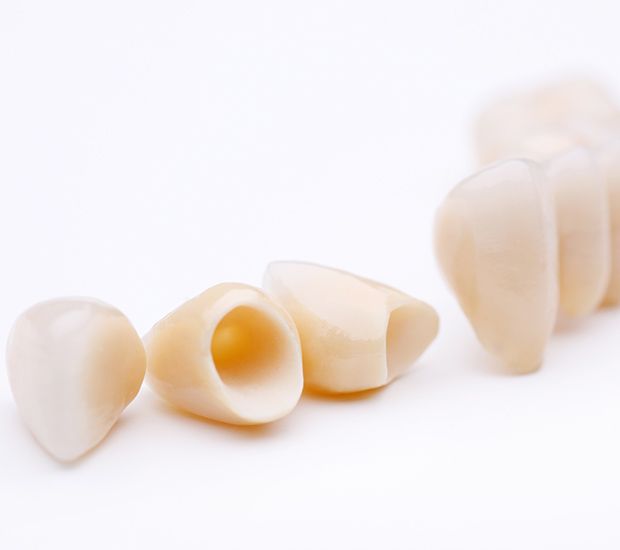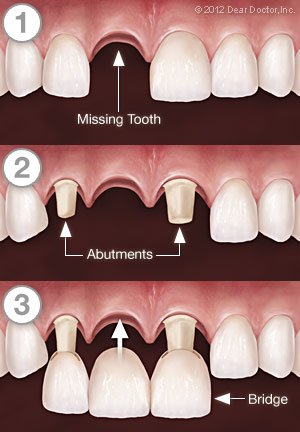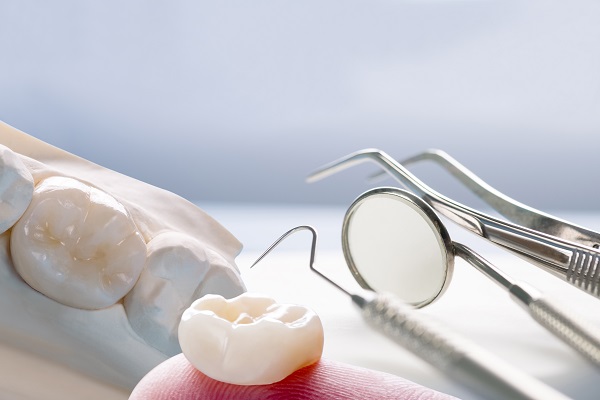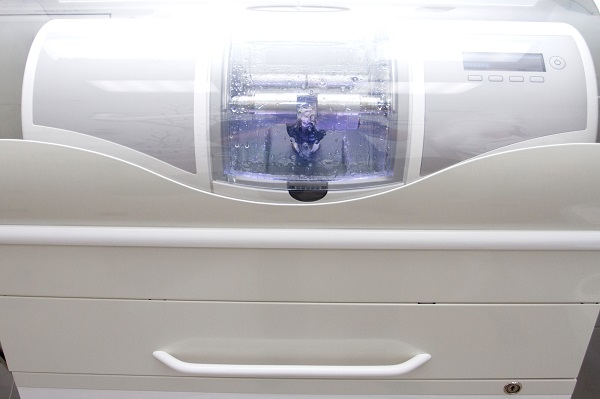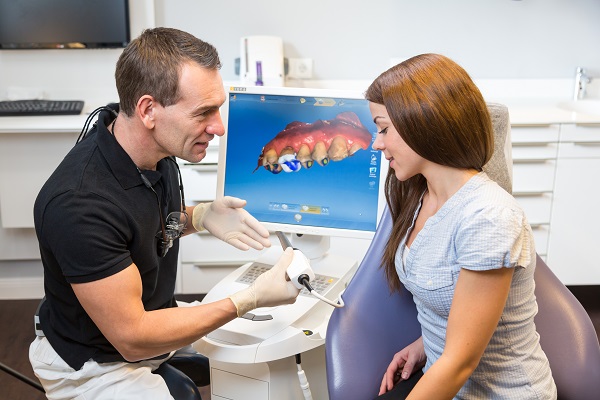Dental Crowns Draper, UT
Dental crowns are caps that restore the shape and size of teeth after they have been damaged, and offer protection from further damage. Dental crowns are a great option for restoring damaged teeth and are a standard procedure offered at Draper Parkway Dental.
When a tooth is damaged, there is always hope that it can heal on its own. Unfortunately, teeth do not heal or restore damaged enamel on their surface. However, we can help to protect and restore a tooth with a dental crown.
Dental crowns are a versatile treatment which can protect a weak tooth from infection, restore a damaged tooth, cover a dental implant, hold a dental bridge in place and provide a great, natural appearance.
If you have a damaged or weak tooth, then strengthen and enhance that tooth by scheduling an appointment with us for a dental crown.
What are dental crowns?
A dental crown is a cap that surrounds the tooth. We typically use a crown to restore a damaged tooth, but they can also use it to improve the appearance of a smile. A crown can consist of three different materials, all-metal, ceramic-on-metal and all-ceramic. The location of the crown in the teeth will determine the best material to use. For example, front teeth need to have an all-ceramic crown, if possible, since it looks the most natural. Patients may often use ceramic-on-metal crowns since they look natural but have the durability that only metal can provide.
What are dental bridges?
A dental bridge is a way to replace a missing tooth. At Draper Parkway Dental, we provide clients with dental bridges if they want to replace a tooth without wearing dentures or undergoing surgery. The new tooth is held in place by two crowns. It looks natural and consists of a ceramic or porcelain material to match the surrounding teeth. As a cosmetic dentist, Dr. Rubisch will make sure that the new tooth looks and feels amazing.
Before the Procedure
If you are getting dental crowns or a dental bridge for cosmetic reasons, we recommend that you whiten your teeth first. At Draper Parkway Dental, we offer teeth whitening procedures that can improve the appearance of your smile quickly and easily. It is important to have this procedure done first because the material that crowns and bridges are made out of are both stain and bleach resistant. That means that if it is created to match yellow teeth, it will remain yellow even if you have your teeth whitened at a later date. When you have the procedure done first, your new crown or bridge will be made to match your new brilliantly white teeth.
When preparing for the procedure, we recommend that patients take a day off of work. If possible, you may want to take a couple of days off. It is normal for teeth to be somewhat sensitive, and it is easier if you don't have to worry about meeting clients and keeping up with your busy schedule.
Draper, Utah Dental Crowns and Dental Bridges
The Process
When getting dental crowns and dental bridges installed, it is advisable that you work with a cosmetic dentist that knows how to complete the procedure in a way that looks natural. At Draper Parkway Dental, we can do so while also working to keep our patients as comfortable as possible by using sedation dentistry. The process for both procedures is fairly similar. Before getting started, an impression is taken of the teeth so that the new crown or bridge can be created in a dental lab.
When placing a dental crown around a tooth, Draper Parkway Dental starts by preparing the tooth. We will need to remove a portion of the enamel so that there is room for the new crown to surround the tooth without pushing other teeth out of place. Once complete, we will clean the tooth and secure a temporary crown to it using removable glue. Patients typically wear a temporary crown for around two weeks while waiting for a permanent one to be created in the lab. During this time, it is important to be careful with what you eat and how you brush your teeth since the temporary is designed to come off.
When the dental restoratives are complete, patients return to our Draper dentist office, so that we can remove the temporaries and bond the permanent ones to the tooth. For a dental crown, we will secure the cap around the tooth and complete it through dental bonding. With a bridge, a crown is placed on the two teeth that are surrounding the missing one. On top of the crown is a piece that looks like natural gums that will hold the new tooth in place. These two crowns serve as anchors for this synthetic "bridge" and makes a new tooth as durable as it can be. Patients depend on this procedure as a way to replace missing teeth in a way that looks natural and restores the functionality of the missing tooth.
Check out what others are saying about our dental crown and bridges on Yelp: Dental Crowns and Dental Bridges Draper
After the Procedure
When getting dental Restoratives, your teeth will be somewhat sensitive after they have been prepared. This is why you need to wear a temporary crown while waiting for a permanent one to be created. We use sedation dentistry to ensure that you will not experience any discomfort during the procedure and after the fact you simply need to take some oral pain medication for a couple of days until you feel better.
The benefit of wearing a crown is that it surrounds and protects the tooth. This means that regardless of how damaged the tooth was, you can eat your favorite foods without fear of discomfort. A crown can restore the functionality of your mouth by making it easy to eat, drink and speak like normal. This is ideal for people that are suffering from severely sensitive teeth, have a cracked or chipped tooth or have undergone a root canal. Similarly, a bridge makes it possible to eat and speak like normal without worrying about your new tooth becoming loose or falling out. They are both ideal for people that have active lifestyles and don't want to be constrained by their teeth. To find out if the procedure is right for you, call 801-252-4439 to schedule an appointment with us and discuss your options. At Draper Parkway Dental, we make it easier for patients throughout Draper to have a beautiful and functional smile.
Crowns & Bridgework
Dentistry is an art as well as a science; dental crowns offer a perfect example of this. A dental crown or “cap” is a covering that fits over a damaged, decayed or unattractive tooth. It can even replace a tooth entirely as part of dental bridgework.
A crown completely covers a tooth above the gum line. This is in contrast to a dental veneer, which only covers a tooth's front surface and needs natural tooth structure to support it. Therefore, if a tooth is missing a significant amount of structure above the gum line, a crown would be the restoration of choice.
Crowns strengthen damaged teeth, allowing them to function normally again. When crafted from today's high-tech porcelains (dental ceramics), crowns are virtually indistinguishable from natural teeth. They can even be designed to improve upon a tooth's original appearance.
There are other materials besides porcelain that we can use to make dental crowns, depending on what qualities are most important. For durability, cast gold can't be beat. However, this is not always the most aesthetic choice — especially towards the front of the mouth. Other possibilities include porcelain-fused-to-metal crowns (PFM), which have a metal interior for strength and a porcelain exterior for a more natural appearance, and all-porcelain crowns with zirconia, representing the strongest ceramic. We would be happy to discuss the pros and cons of these various options with you.
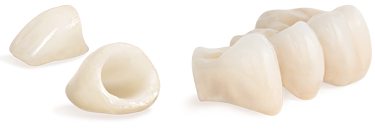
Crowning or Capping a Tooth
Crowning or capping a tooth will usually take two to three visits. At the first visit, your tooth is prepared to receive its new crown. First, it is shaped to fit inside the new covering. This will involve some drilling to give the tooth a uniform shape. The tooth and the surrounding area will be numbed beforehand. If there is very little tooth structure left to begin with, the tooth may have to be built up with filling material, rather than filed down, to support the crown.
After the tooth is prepared, impressions of your teeth are taken, either digitally or with reliable, putty-like impression materials, and sent to the dental laboratory. There, the impressions will be used to make models of your teeth for the creation of a crown. The models will serve as guides to the highly skilled lab technicians, who will ensure that your new crown is designed to enhance your smile and function well within your bite.
Before you leave the office, a temporary crown will be attached to your tooth to protect it until the permanent crown is ready. At the second visit, your permanent crown will be attached to your tooth with either a resin that hardens when exposed to a special light source, or a type of permanent cement.
Creating a Bridge
Crowns can also be used to create a lifelike replacement for a missing tooth. This is done with bridgework, which spans the space of the missing tooth and requires at least three crowns. Two of those crowns will be placed over healthy teeth on either side of the missing tooth; these healthy teeth are referred to as abutment teeth. The two crowned abutment teeth become supports for a third crown placed in between them; that third crown is referred to as a pontic. If more than one tooth is missing, more crowns will be needed to bridge the gap in between the abutment teeth.
The number of abutment teeth necessary to replace missing teeth is influenced by the number of missing teeth, the size and length of the abutment tooth roots, the amount of bone support each abutment tooth has, as well as where in the mouth the missing tooth is located. For example, if you have three missing teeth, four abutment teeth may be necessary, thereby creating a seven-tooth bridge. Engineering and designing of the bridge requires an understanding of how to replace teeth, as well as the biology of the supporting gum and bone tissue.
Caring for Your Crowns & Bridgework
Crowns and bridgework require the same conscientious care as your natural teeth. Be sure to brush and floss between all of your teeth — restored and natural — every day to reduce the buildup of dental plaque. When you have crowns, it is even more important to maintain your regular schedule of cleanings at the dental office. Avoid using your teeth as tools (to open packages, for example). If you have a grinding habit, wearing a nightguard would be a good idea to protect your teeth and your investment.
If you live in the Draper area, call (801) 252-4439 to schedule your dental exam so that you can remain in good health or receive treatment for a current condition.
Questions Answered on This Page
Q. What will the process for dental bridges be like?
People Also Ask
Q. How long will a dental bridge last?
Definition of Cosmetic Dentistry Terminology
- Allograft
- An allograft is a graft of tissue from a donor within the same species as the patient that is not a genetic relative.
- Alveolar Ridge
- The alveolar ridge is the bony ridge for one of the jaw ridges located on the roof of the mouth or on the bottom of the mouth.
- Autograft
- An autograft is a graft of tissue from one portion of an individual’s body to another.
- Bleachorexia
- Bleachorexia is when people continue to abuse teeth whitening solutions without consulting professionals, causing significant damage to their enamel and gums in the process.
- Cap Splint
- A cap splint is a plastic or metallic device that professionals may use to treat mandible or maxillary fractures and cover crowns of teeth.
- Cosmetic Dentistry
- Cosmetic dentistry is generally used to refer to any dental work that improves the appearance (though not necessarily the function) of a person’s teeth, gums and/or bite.
- Crown Lengthening
- Crown lengthening is a surgical procedure that increases the extent of a tooth structure for restorative or esthetic purposes.
- Dental Crown
- A crown is an artificial tooth, usually consisting of porcelain, which covers the top of the implant to provide people with an aesthetically pleasing and fully-functional tooth.
- Dentin Hypersensitivity
- Dentin hypersensitivity is when the enamel wears down on the tooth enough that the dentin faces exposure and will cause great levels of pain when a person applies pressure to the tooth or drinks hot/cold beverages.
- Dentist
- A dentist, also known as a dental surgeon, is a doctor who specializes in the diagnosis, prevention, and treatment of diseases and conditions of the oral cavity.
Back to top of Dental Crowns and Bridges
